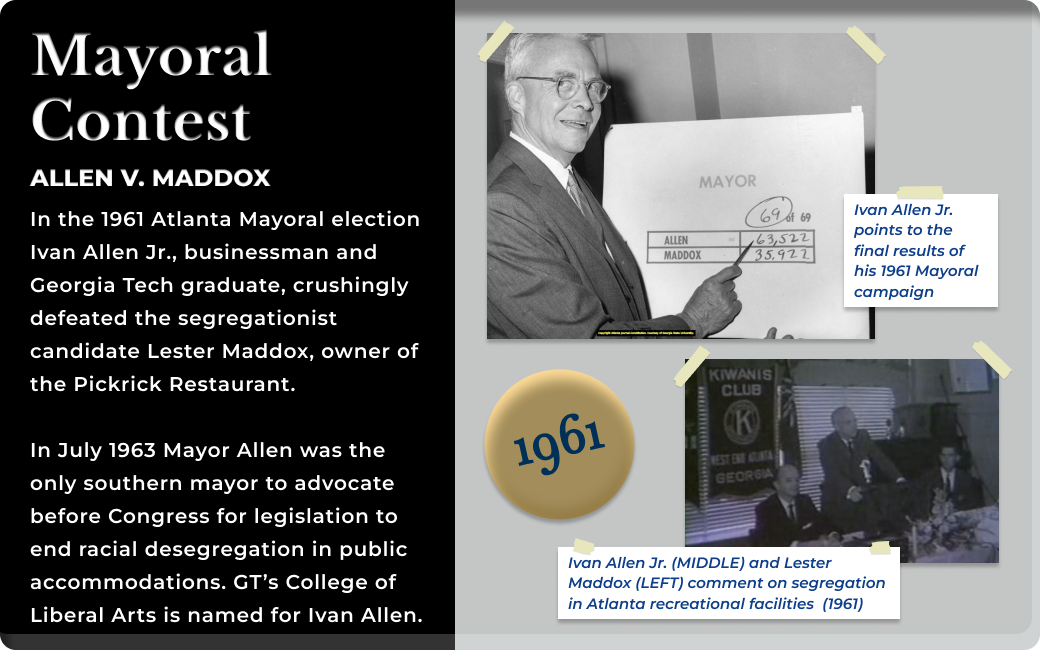The Pickrick Project:
Augmented Reality Storytelling of Atlanta’s Civil Rights History
Role: UX Designer of Introductory Timeline | Spring 2023
The Pickrick Project is a fusion of public history, educational technology, place-based education, and AR storytelling, redefining the Civil Rights movement experience. As a UX Designer, I collaborated closely with a diverse team of designers, developers, and a historical researcher, shaping the project's introductory timeline. My dual expertise in UX design and history allowed me to craft an experience that caters to both novices and history enthusiasts, offering essential context without redundancy.
Goals
The Pickrick Project's mission is to “make the invisible visible” through AR storytelling. It achieves this by recreating historical events in place-based AR and reframing the narrative to spotlight the four ministers who played pivotal roles in these historic protests.
Historical Context
On July 3, 1964, a day after the historic Civil Rights Act passage, ministers and students George Willis, Jr., Albert L. Dunn, and Woodrow T. Lewis courageously challenged segregation by attempting entry into the infamous Pickrick restaurant. This event led to the first lawsuit under the Act, with Constance Baker Motley of the NAACP Legal Defense Fund at the helm. Over months, owner Lester Maddox tried to evade legal action, but non-violent protesters persisted, forcing the Pickrick's closure. On February 23, 1965, Jack Googer peacefully dined in the now-renamed Gateway Cafeteria. Georgia Tech later acquired the site, culminating in its transformation into the Eco-Commons.
Design Challenges and Considerations
Balancing Baseline Knowledge: Catering to a diverse audience, I ensured that the experience accommodated varying levels of familiarity with Atlanta's Civil Rights history, offering context for newcomers while engaging informed users.
Sequential Engagement: The introductory timeline guided users sequentially through historical milestones, maintaining chronological progression while allowing visitors to explore at their own pace.
Narrative Reframing: We reframed the narrative to elevate the four ministers while contextualizing Lester Maddox's actions within the broader story.
User Engagement: Creating empathy and connection with the ministers' experiences was a core goal, fostering an understanding of their resilience.
Educational Value: The design struck a balance between emotional impact and educational depth, ensuring users left both moved and informed.
UX Design Solutions:
Contextualization: We contextualized Lester Maddox's actions within the societal and political landscape, highlighting the ministers' challenges.
Layered Information: Implementing a layered approach, users could access varying levels of detail, accommodating diverse knowledge levels.
User Testing: User testing sessions with participants of varying historical knowledge levels informed and refined the user experience.
Final Demo of Intro and Timeline
Mid-Semester Full Demo
Conclusion
As the UX Designer for The Pickrick Project's introductory timeline, I created an inclusive experience that balances context for newcomers and depth for informed users. This timeline serves as a vital gateway, offering a seamless, engaging, and educational journey into The Pickrick Project. It exemplifies design's power in bridging historical understanding and making complex narratives accessible to all.






